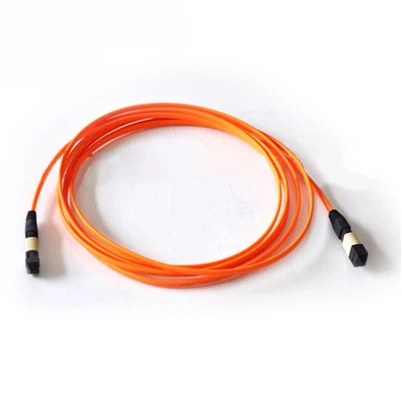Ethernet Cable Jackets: Materials and Fire Ratings
Leave a message
In today's article, we will discuss the insulation and jackets of ethernet cables, as well as their fire ratings.
1. Ethernet Cable Jacket Materials.
As implied by the name, the ethernet cable jacket is the outer protective layer of the ethernet cable. It is typically made from soft plastic materials like PVC (Polyvinyl Chloride), PE (Polyethylene), TPU (Thermoplastic Polyurethane), and LSZH (Low Smoke Zero Halogen). Different jacket materials offer distinct characteristics and advantages.

PVC is one of the most common materials used for ethernet cable jackets. It has good flexibility and wear resistance, effectively protecting the internal wires. Additionally, PVC is heat-resistant and operates effectively within a specific temperature range. It also provides excellent insulation, preventing current leakage and enhancing transmission speed and stability. However, PVC is inferior to PE in terms of sun resistance, water resistance, and freeze resistance, making PVC-sheathed cables typically suitable for indoor use.

PE is another widely used jacket material for ethernet cables. Compared to PVC, PE offers better cold resistance and weather resistance. PE-sheathed cables can operate normally at lower temperatures and withstand external environmental factors such as sunlight, rain, and oxidation. As a result, PE-sheathed cables are commonly used for outdoor and harsh environment applications. Additionally, most network cables use PE for the inner jacket.

LSZH (Low Smoke Zero Halogen) is a safe and environmentally friendly material. LSZH cables are characterized by low smoke emission and non-flammability, making them increasingly required for projects with high safety standards.

2. Fire Resistance of ethernet Cable Jackets
To reduce safety hazards and prevent fires, ethernet cable materials are generally required to be flame retardant. Fire can thus be used to test cable quality. High-quality cables have a high ignition point and are unlikely to self-ignite. If ignited, they will self-extinguish once the fire source is removed, such as CM/CMR/CMP fire-rated cables. In contrast, low-quality cables, to save costs, use inferior materials for the outer jacket, which can self-ignite at certain temperatures, releasing large amounts of toxic gases and producing thick black smoke. This is why LSZH low smoke zero halogen material is recommended for the outer jacket.
As a purchasing professional, it is not only about selecting cost-effective products but also comparing prices from different suppliers. However, certain principled indicators must not be compromised. For example, the London subway fire was caused by a major fire, and the procurement officer involved in the incident was also implicated.
PVC/LSZH indicates the material of the ethernet cable. Both have flame retardant properties, but LSZH offers superior flame retardancy and is more environmentally friendly, though it is relatively more expensive. CM/CMR/CMP indicates the fire rating of the ethernet cable, where CMP/CMR ratings are primarily for engineering cables, and CM is for ordinary cables. Generally, the higher the fire rating (CMP > CMR > CM), the more expensive the cable. If none of these labels are present, it theoretically indicates that the cable has poor material quality and fire resistance, failing to meet international cabling and wiring standards, which can lead to network issues or safety hazards.

3. Explanation of ethernet Cable Fire Ratings
In terms of cable fire ratings, the most important standards are the three fire ratings defined by NEC. CM, CMR, and CMP are three different fire-rated ethernet cables defined by the National Electrical Code (NEC) in the United States, belonging to the UL standard for flame-retardant cables. These ratings effectively prevent fires and ensure data center and personal safety. So, what are the differences between these three fire-rated cables?

CM is the most widely used flame retardant rating for ethernet cables. It achieves flame retardancy through halogenated chemical substances, and its test standard is UL 1581. Per the definition, a small bundle of CM-rated cables will self-extinguish within less than 5 meters of flame spread. CM-rated cables usually have a PVC outer jacket and high-density PE insulation. When burned, they emit toxic halogens, smoke, and release a large amount of heat. CM-rated cables are generally used for horizontal wiring on the same floor.

CMR fire rating ranks second in safety. It achieves non-flammability by increasing the cable's ignition point (around 300°C), and its test standard is UL 1666. Under forced fan combustion conditions, a bundle of CMR cables must self-extinguish within less than 5 meters of flame spread. CMR-rated cables have a high flame-retardant PVC outer jacket and high-density PE insulation. When exposed to flame, they emit toxic halogenated gases (chlorine) and lead vapor, which rapidly consume oxygen in the air, extinguishing the flame.
CMP fire rating offers the highest safety level, with perfect flame retardancy and minimal toxic smoke emission when burned. The CMP test standard is UL 910. Under forced fan dense combustion conditions, a bundle of CMP cables must self-extinguish within less than 5 meters of flame spread.

CMP-rated cables have a fluorinated material outer jacket (such as PTFE Polytetrafluoroethylene, FEP Fluorinated Ethylene Propylene), with high decomposition and ignition temperatures. Since CMP cables use Teflon-based chemicals, they prevent flame spread and minimize smoke and toxin emission, ensuring that even in the event of a fire, the building will not be filled with large amounts of smoke or harmful toxins from burning cables.
Thus, when selecting ethernet cables, refer to the labels on the outer jacket and the product's technical documentation on fire ratings to make an informed choice.






